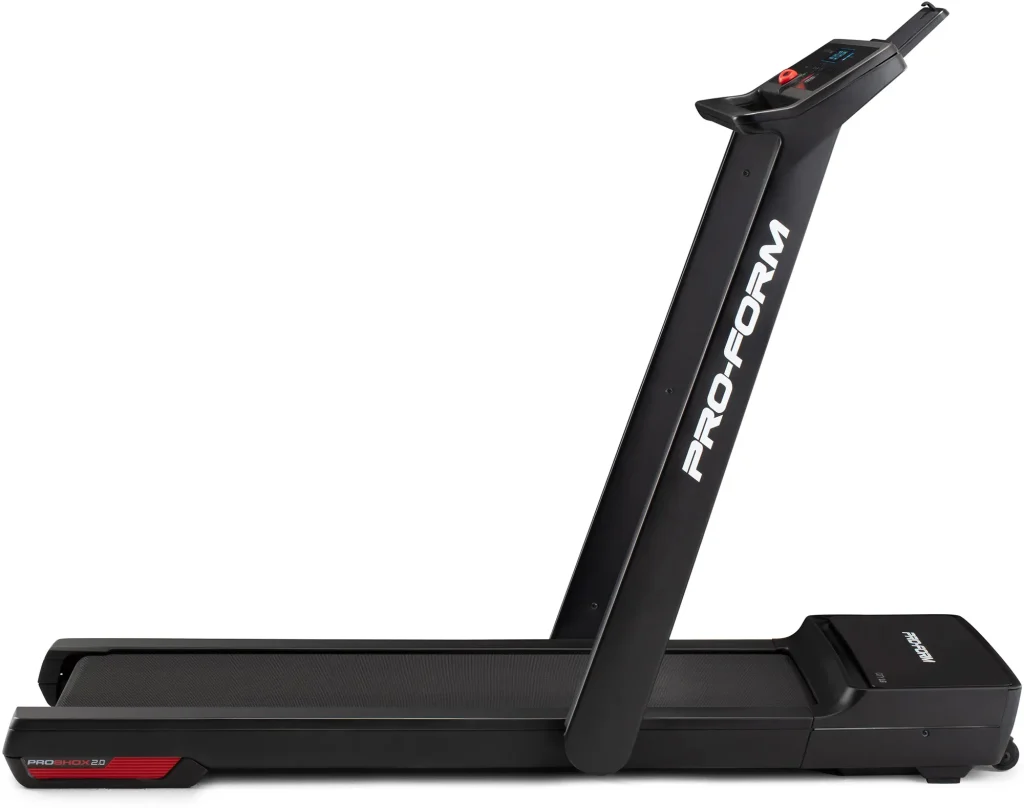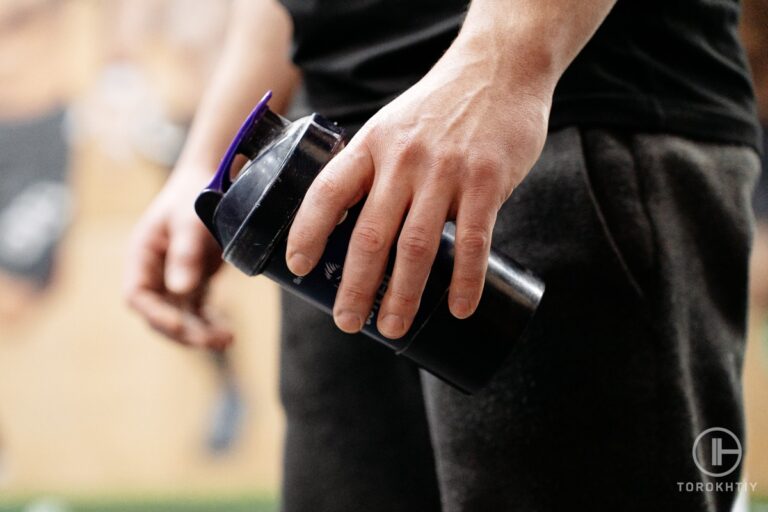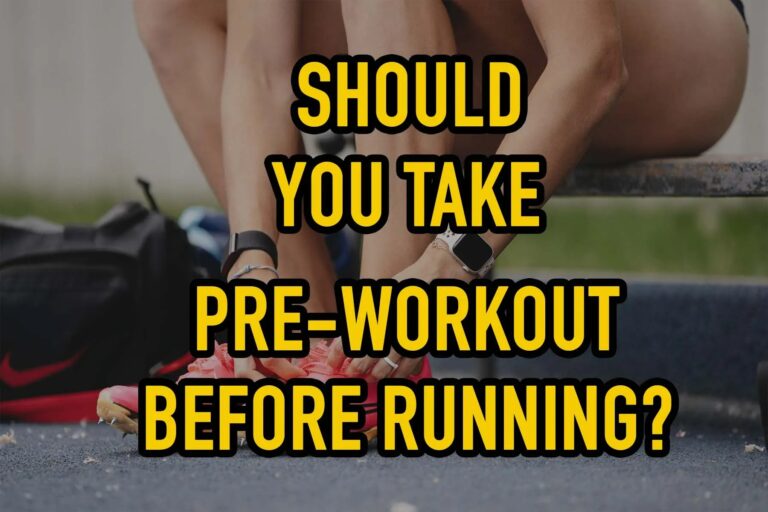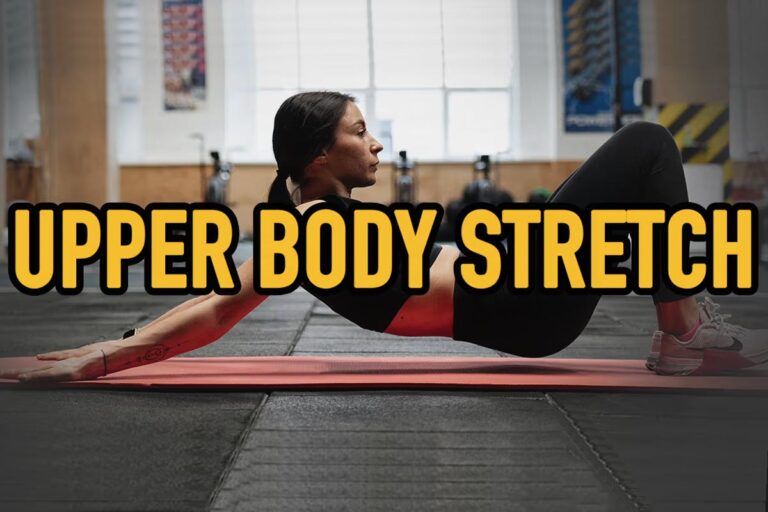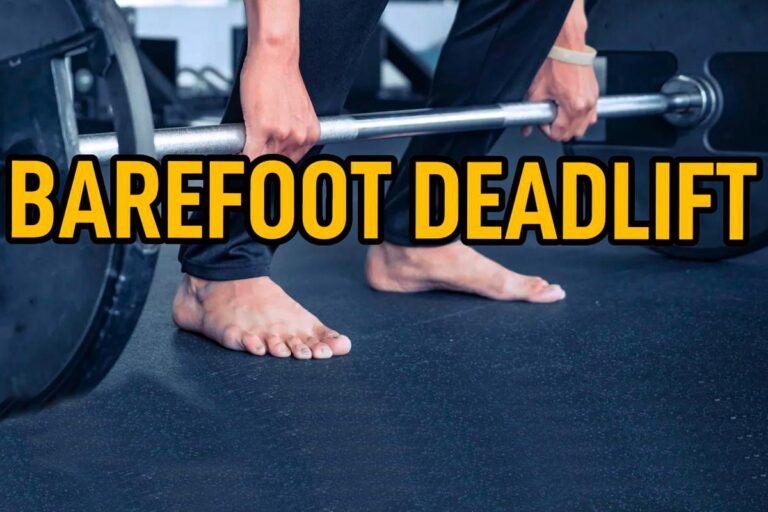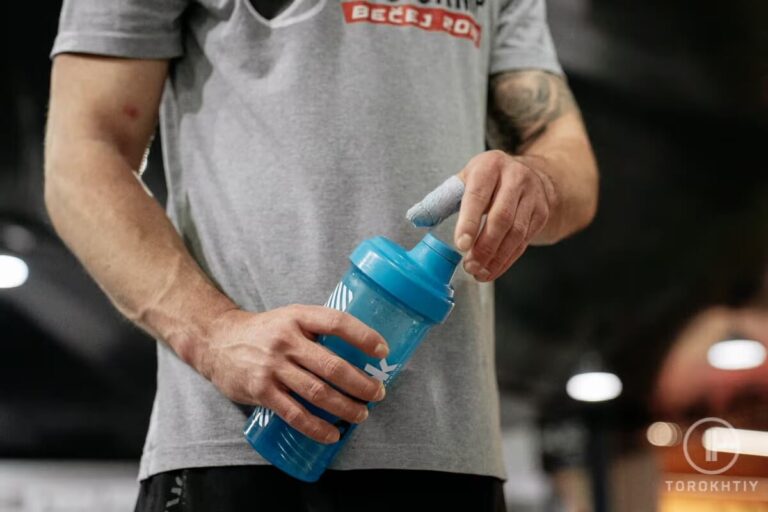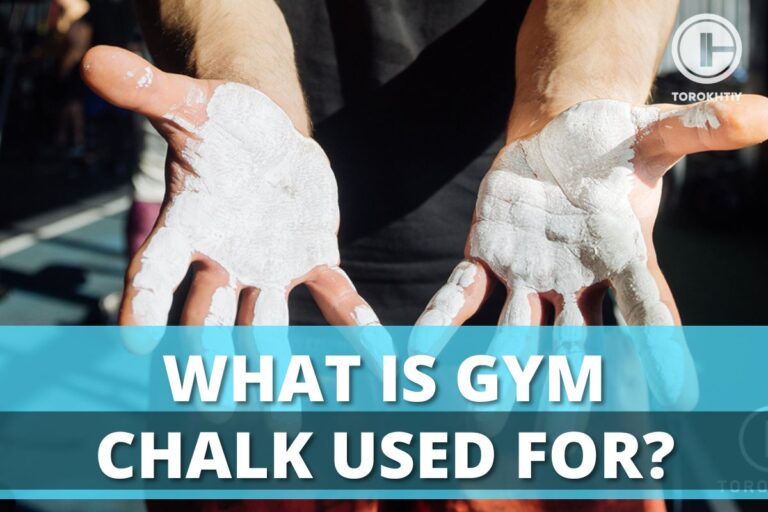How Many Calories Do You Burn On A Treadmill?
Not every athlete thinks about the number of calories they manage to burn during their running session indoor on a treadmill. Knowing the main factors that influence this and tracking your performance indicators will help you to define how many calories you burn on a treadmill. In this article, we will have a look at specific treadmill workouts that will torch your fat and assist you in losing weight at home.
How many calories do you burn on a treadmill? This is a common question among those who are just taking up running. The amount of calories you can burn on a treadmill depends on aspects such as your body composition, running intensity, training regime, etc. The majority can burn 400-600 calories per 1-hour running.
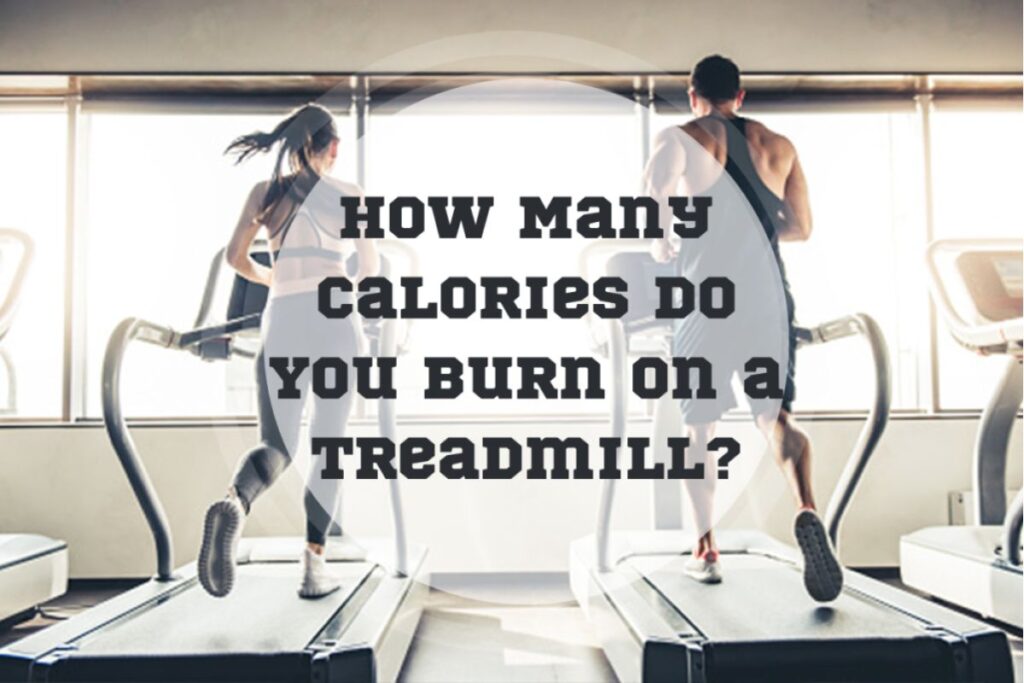
5 Factors Affecting Calorie Burn on Treadmill
Runners of all levels are concerned about their gradual progress, improving their running metrics, and increasing performance capabilities. To find out how many calories will running on a treadmill burn, track your calories burned during each training session by increasing the intensity and duration of running over time.
To burn more calories running on a treadmill, besides a regular training regime itself, you should combine it with a well-balanced nutrition and sleep regime. There’s no defined formula on how to burn more calories for everyone: what works for one athlete might not be applicable for someone else.
There are several factors that influence how many calories you burn on a treadmill:
1. The Intensity of Running
You may want to start with walking on a low incline, then gradually increase speed or incline as you become more comfortable, or if you want to increase the intensity. For example, the amount of calories burned walking on a treadmill will be lower than intense running.
It’s obvious that an athlete of regular weight, i.e., 154 lb, will burn the same amount of calories by pushing himself harder compared to a person of a higher weight who trains at a moderate pace. To change the intensity of running, you can increase your speed and treadmill incline which will make you work at a higher pulse zone.
Also, adding high-intensity running intervals will help to burn more calories, compared to steady-state workouts, i.e., low-intensity jogging, hiking, or riding a bike.
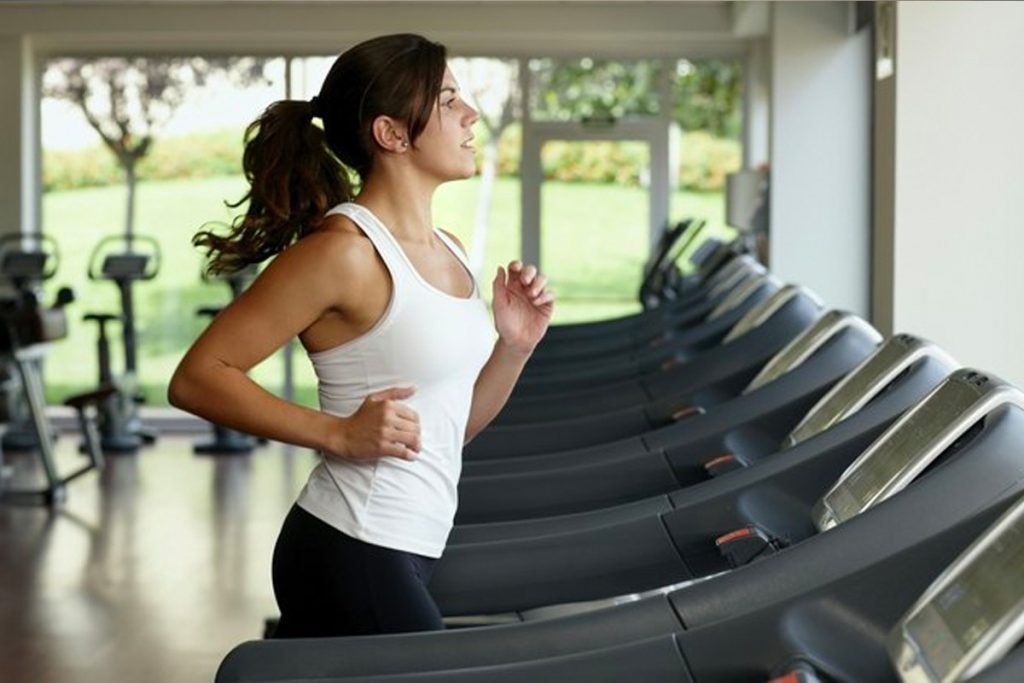
2. Fitness Level and Physical Condition
“How many calories should I burn on a treadmill?” you may ask before starting to run indoors. Calorie burning process directly relates to the regularity and intensity of your training: the more you perform a particular type of training, i.e., running, the quicker and easier your body adapts to new challenges and gets used to burning calories consistently. That means you’ll be able to run for a longer time and at a higher intensity as your body and cardiovascular system are ready for more physical exertion.
This also affects the amount of calories you’ll burn. As you adapt to more intensive running, you’ll burn fewer calories because you become more endurant and fit. That’s the reason why a beginner with no or minimal experience in sports activity will burn more calories by doing the same training than a more experienced athlete.
Changing the intensity of running sessions and adding up other supplementary workouts will develop your strength, increase your fitness level, and boost your calorie burn process.
3. Metabolic Rate
When we’re talking about metabolism, we refer to the metabolic rate, at which our bodies consume energy, or burn calories. The total energy expenditure (TEE) includes the basal metabolic rate (BMR), the thermic effect of food, and the energy expenditure of activity, or activity thermogenesis.
Some have low, others – high metabolic rate, and burn more or fewer calories. This aspect depends on various factors like genetics, muscle mass, weight, and calorie intake.
Overall, metabolism, or a basal metabolic rate, is the process by which the body converts the food it consumes into energy. To burn more calories you need to be more active and choose more intensive workouts.
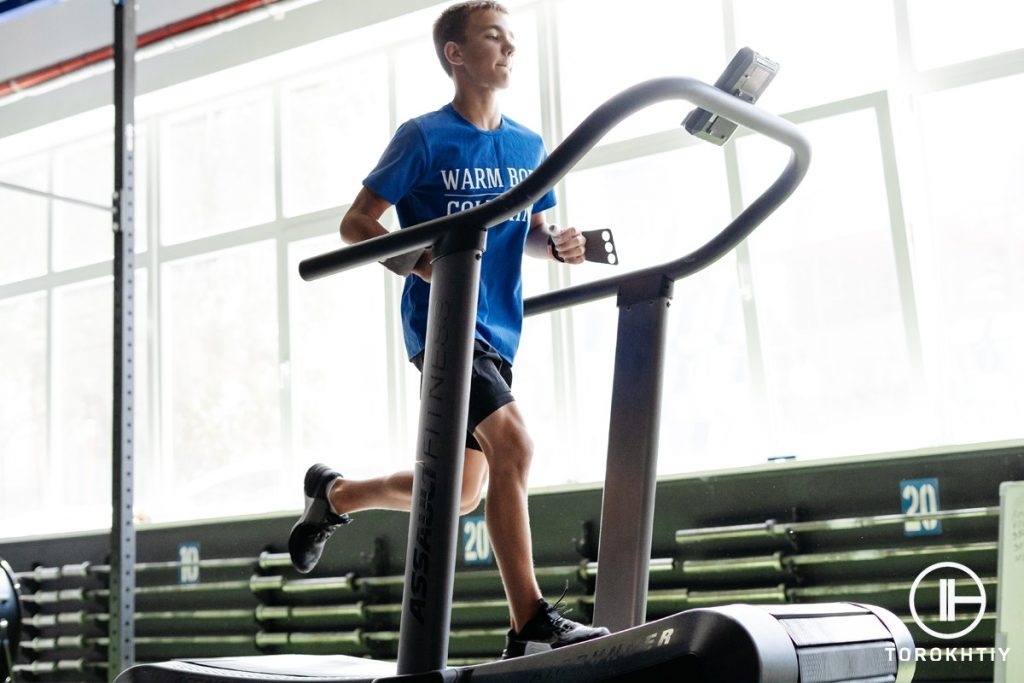
4. Body Composition and Weight
Heavier athletes tend to burn more calories than athletic ones. The reason is a relation between calories and energy expenditure that is much greater in people with more weight. As they have more weight, the body needs more energy to move it, and maintain all systems work, and a greater amount of energy is required. So, they’ll manage to burn more calories.
5. The Ratio of Muscle Mass
It resembles the previous point: as we have more muscles than fat deposits, we tend to burn more calories to make our bodies work. That’s the reason why athletes with muscular and lean bodies burn more calories as they require more energy. As usual, during running, especially intensive one, more muscle mass increases your calorie burn, because your body uses more energy to support the working rate of your muscles.
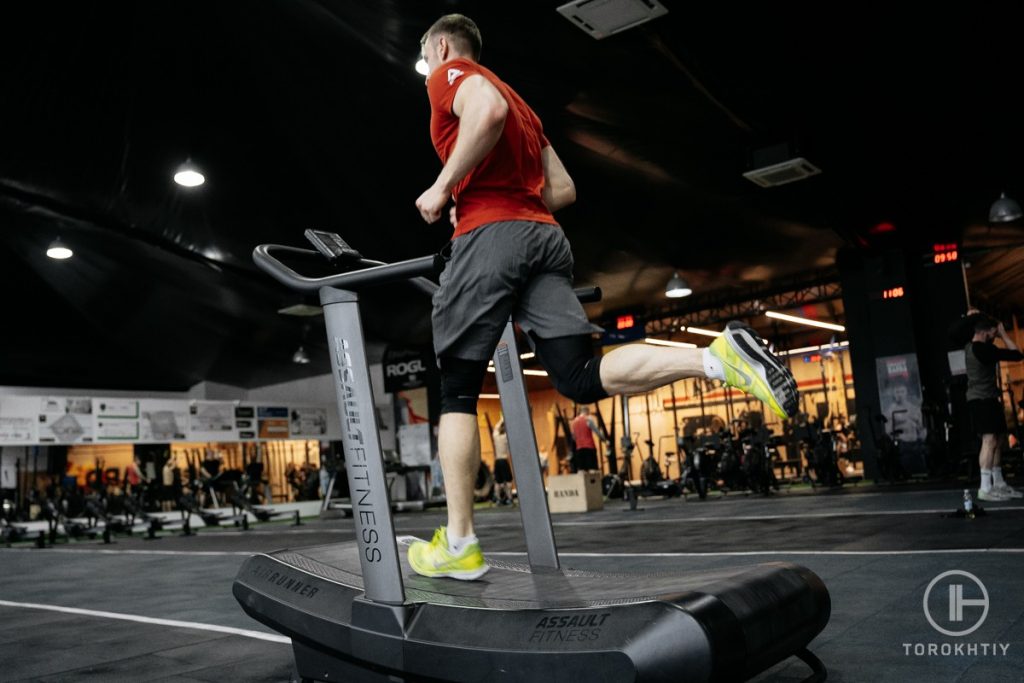
Calculating Calories Burned on a Treadmill (during different types of workouts)
On average, a person can burn 250-300 calories in 30 minutes of running on a treadmill. This data relates more to a running workout of moderate intensity that will be comfortable both for beginners and intermediate runners. Although to get higher indicators and better results, you need a well-thought-out training plan that meets your goals and physical condition.
To calculate calories burned on a treadmill, you can use an online treadmill calorie calculator for getting as approximate results as possible. All you need is to fill in the information like your weight, incline, running speed, duration of training, and distance. Once you fill in the fields, a calculator will provide you with estimated information on the calories. For instance, an athlete’s weight is 165 lb, treadmill incline is 3%, duration is 30 minutes, distance – 6 miles, and the speed is 5 mph. As a result, the total calories burned on an incline treadmill is 382 kcal.
However, for getting almost accurate data, use a heart rate chest strap you can sync with a treadmill console and your smartwatches as well.
It needs to be mentioned that such a calorie amount can be burned by different people with running of different intensities. For instance, a beginner with a low fitness condition and with a slight excess weight could burn 300 calories by jogging on a treadmill for 30 minutes. While a runner of intermediate level with a normal weight will burn the same amount of calories around in 45 minutes.
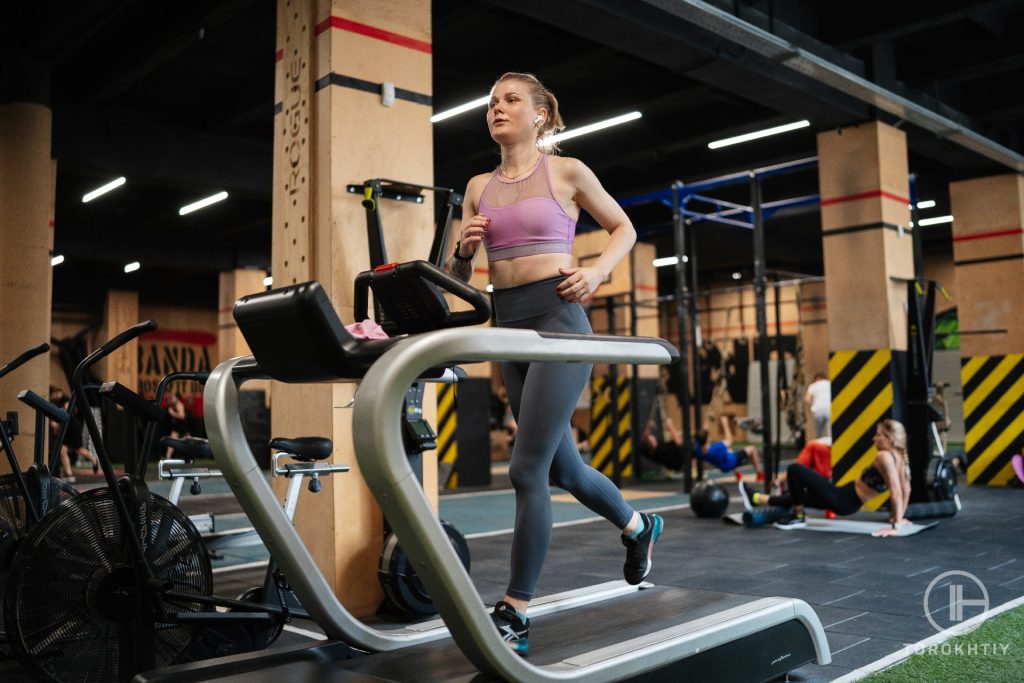
There’s a simple rule: the more intensive your running is, the more calories you’ll burn. By increasing the speed and incline level of a treadmill you’ll increase the calorie burn process. HIIT workouts on a treadmill will help you to burn more calories in a shorter time.
In addition to running on a treadmill, you can try other activities to enhance calorie burn. It can be strength training, HIIT, or functional workouts that will help you to build muscle mass, increase your power, and endurance.
| Feature to Compare | Treadmill | HIIT | Strength Training |
|---|---|---|---|
| Purpose of use | Targets mostly the lower body; improve general strength, endurance, and strengthen the cardiovascular system | Gain endurance, enhance aerobic and anaerobic capabilities, muscles, burns fat, maximize athletic performance | Gain muscle mass, boost power and stamina to pull heavy weights, improve metabolism, burn fat |
| Workout duration | 30 minutes | 30 minutes | 30 minutes |
| Intensity level | medium (5-6 mph) | intermediate | moderate |
| Calories burned | 240-350 kcal | 400-500 kcal | 100-130 kcal |
1. HIIT Training Using a Treadmill
High-intensity training is about performing at your maximum in a short burst of time with short breaks between the sets. It includes explosive movements to maximize athletic performance, build strength, and muscle endurance, and also lose weight. The higher intensity of the exercise, the increased rate of fat oxidation and excessive oxygen consumption will occur.
2. Treadmill vs Strength Workout
Strength training like weight lifting usually leads to higher EPOC levels, meaning excess post-workout oxygen consumption, than cardio workouts. This means that the body continues to burn calories even after completing a weightlifting workout. As a result, you’ll succeed to boost your metabolism processes and burn more calories. For instance, powerlifting can elevate athletes’ overall basal metabolic rate (BMR) for up to 2 days
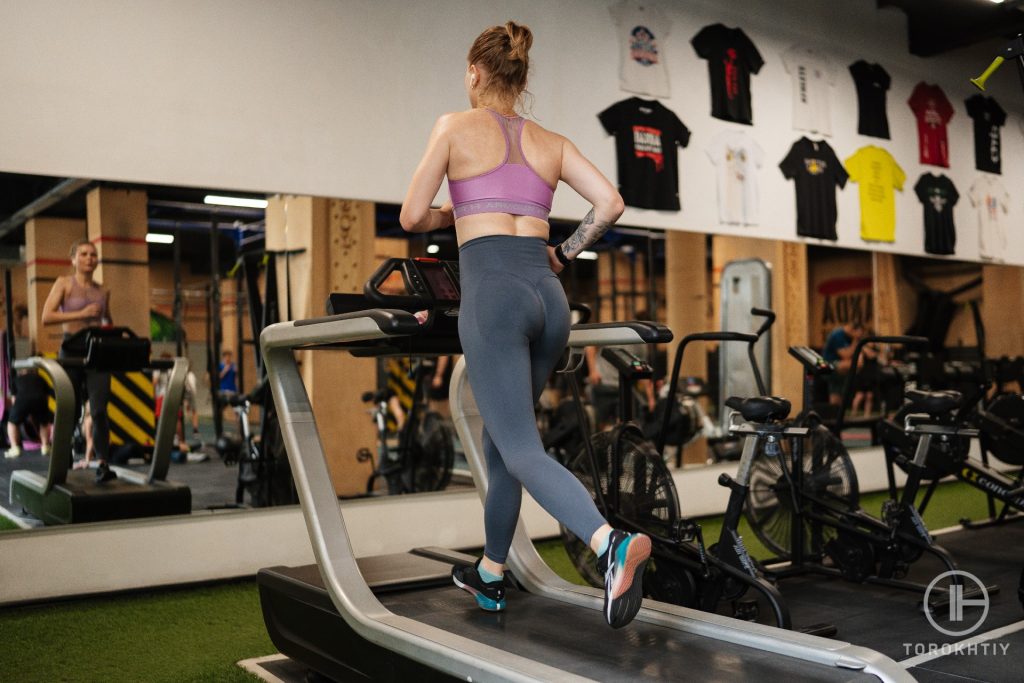
Treadmill Workouts for Calorie Burn
These variants of running training are the best way to burn calories on a treadmill:
1. HIIT Sprints
You can alternate various running modes, meaning light jogging, or running with short sprint bursts at your maximum HR. This way your training won’t be monotonous and you’ll be able to adjust a comfortable running stride, develop your speed and endurance. You’ll also make your cardiovascular system ramp up pretty well.
You can incorporate this workout as follows. Consider your fitness level to add resistance and incline, choose a comfortable speed and make this session as many circuits as you can:
- Hold a pace at 4 mph for 3 minutes.
- Proceed to a tempo at 6.5 mph for 2 minutes.
- Make a short burst for 30 seconds at 8 mph.
- Return to a lighter pace at 6.5 mph for 1 minute.
- Speed up again for 30 seconds with an 8.5 mph running pace.
- Slow down to 4 mph and hold this tempo for 3 minutes.
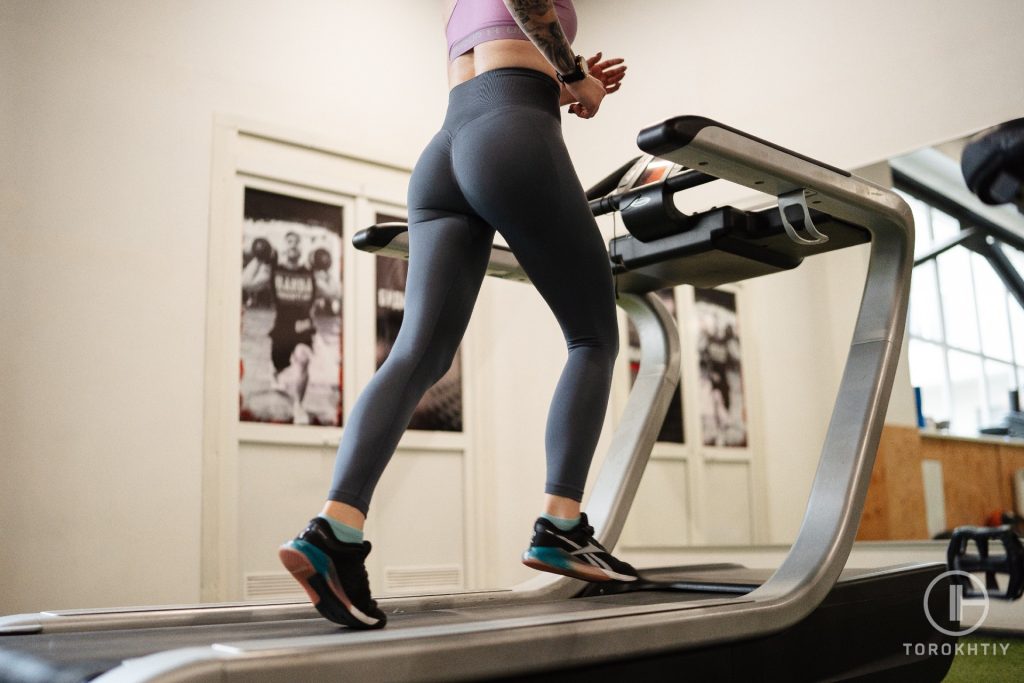
2. HIIT Uphill Intervals
You’ll increase the incline throughout the session every 2 minutes without taking a rest. Starting from a 2% incline at 4 mph, you’ll increase the intensity of this hike workout to 5% at 4.5 mph, the next 2 minutes – at 8% with the pace of 3.8 mph for 2 minutes. When you start feeling your legs burning and your pulse rate increases, shift to a slow pace at the incline of 10%. Take a breath and get ready to ramp up further: challenge yourself for 1 minute at 3.3 mph with 12%.
3. Pyramid Intervals
It’s considered to be one of the most effective treadmill workouts to burn calories thanks to its duration and intensity. It combines steady-state cardio and high-intensity intervals by keeping a consistent pace in higher pulse zones dominantly. The training plan can be as follows:
- Keep the speed of 5 mph for 5 minutes at a 2.5% incline.
- Then alternate your speed from 5 mph to 6.5 mph with a gradual increase with each minute, and at the minimal incline of 1%. The total duration is 4 minutes.
- Increase your pace to 7 mph with the same incline and keep it for 2-3 minutes.
- Lower your tempo to 4 mph and keep the light running for one minute.
ProForm City L6: Treadmill we Recommend
Look at this stellar compact treadmill that will bring you the ultimate running experience. ProForm City L6 treadmill comes with a 17.5″ x 45″ running surface, offers a speed range of 0-8 mph, and is equipped with ProShox cushioning to bring you comfortable and stress-free running.
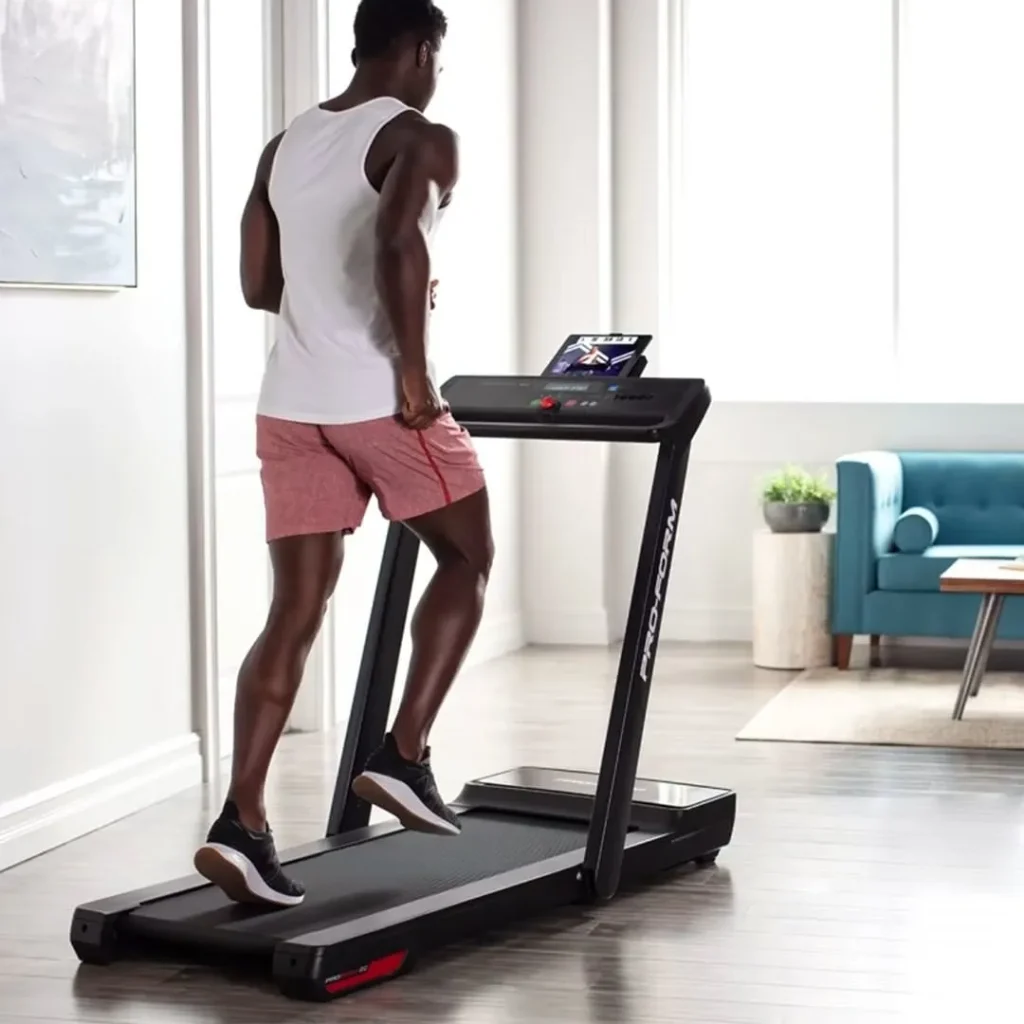
The treadmill weight is 125 lb and the maximum weight it can withstand is 250 lb. It can be connected with the iFit application via Bluetooth where you’ll find endless options to diversify your workout.
Treadmill vs Exercise Bike vs Running Outdoors vs Elliptical
All these cardio activities can rev up your heart rate, metabolism level, burn fat, strengthen and tone up your body, etc. Let’s outline what type of cardio training offers the most effective way to burn calories.
1. Amount of Calories Burned on a Treadmill Compared to Other Activities
- Treadmill. Burning 240-350 calories in 30 minutes at a moderate pace is a great way to stay toned.
- Exercise bike. An athlete of 155 lb will burn 260-300 calories in 30 minutes at a moderate cycling intensity.
- Outdoor running. A runner of 175 lb will be able to burn around 340 calories in 30 minutes at a pace of 5 mph.
- Elliptical. A person of 155 lb can burn around 330 calories in 30 minutes.
2. Muscles Worked
- Treadmill. Running on a treadmill targets the quadriceps, hamstrings, adductors, calves, and glutes. Also, you engage your abs and back muscles to keep you upright.
- Exercise bike. You work calves, hamstrings, glutes, and quads. The core is for stabilization and the arms are to keep balance.
- Outdoor running. You activate hip flexors, glutes, quads, hamstrings, calves; abs for stabilization.
- Elliptical. It engages legs and arms, specifically, your triceps, upper back, shoulder, and chest.
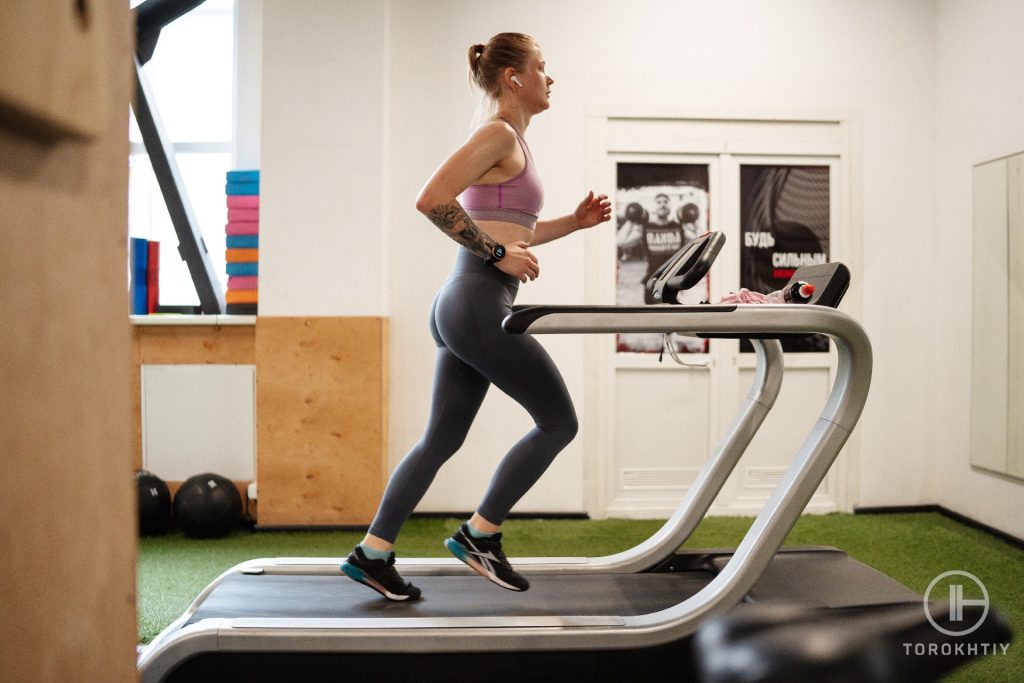
3. Complexity in Usage
- Treadmill. Everyone can start running on a treadmill. No adjustments are required.
- Exercise bike. This training machine could be used for rehab therapy and everyone can hop on pedaling a stationary bike. Also, initial adjustments are necessary before the start.
- Outdoor running. Wear your running shoes and go. What you need is a desire to run.
- Elliptical. It’s a beginner-friendly tool that requires no specific adjustments or high physical condition.
4. Impact Rate
- Treadmill. It’s a workout with a higher impact than stationary bikes and ellipticals. But, it’s milder than outdoor running.
- Exercise bike. Is a less intensive option and has a lower impact than a treadmill.
- Outdoor running. Running outdoors can be high-impact because of the ever-changing terrain and incline. So, it can put stress on your knees and joints.
- Elliptical. Is a low-impact activity, good for newbies and those who have joint, knee, or hip issues.
| Points to Compare | Treadmill | Exercise Bike | Outdoor Running | Elliptical |
|---|---|---|---|---|
| Calories burned (in 30 min) | 240-350 kcal | 260-300 kcal | 340 kcal | 330 kcal |
| Muscles Worked | Quadriceps, hamstrings, adductors, the calves and glutes | Calves, hamstrings, glutes and quads | Hip flexors, glutes, quads, hamstrings, calves | Legs and arms, specifically, your triceps, upper back, shoulder, and chest |
| Complexity of usage | For athletes of all levels | For users of all levels | For athletes of all levels | For athletes of all levels |
| Impact | High-impact, but is milder than running outdoors | Low-impact | High-impact | Low-impact |
FAQ
How Many Calories Do 30 Minutes on a Treadmill Burn?
A runner can burn around 290 calories at a slow running pace in 30 minutes, 360 calories at intermediate running at 6 mph, and 560 calories at a sprint pace.
How long does it take to burn 500 calories on a treadmill?
If your weight is around 160 lb, you’ll manage to burn 500 calories running on a treadmill in 50 minutes of low intensity (5 mph), or in 40 minutes of medium intensity (at 6 mph), or in 30 minutes at above average pace at least at 8 mph.
Is It Good to Burn 500 Calories a Day on the Treadmill?
Yes, if your goal is to lose weight, burning 500 calories by running on a treadmill is an effective way to achieve it. You’ll succeed in burning 3500 calories in a week with a regular training regime, a proper diet plan, and adding extra movements to maximize your activity.
Conclusion
Being a great way to stay fit and burn a sufficient amount of calories, running is a highly universal cardio training that can suit athletes of all sports backgrounds and levels. Even a newbie can start running: there’s no need for specific equipment (besides a treadmill itself), just identify your goals and go. Knowing how many calories you burn on a treadmill in a specific time period will help you to build a realistic training plan, improve your technique, and become stronger.
Also read:
- How to Clean Treadmill Belt
- How to Lose Weight on a Treadmill
- What Muscles Does Treadmill Work
- How to Lose Weight on a Treadmill
- How to Maintain a Treadmill
- Best Portable Treadmill
- Best Under Desk Walking Pad
- Best Shoes for Walking on Treadmill
References:
- Brewer, Christi B.; Booher, Breann M.; Lawton, Nathaniel. Comparison of Acute Energy Expenditure and Rating of Perceived Exertion in Equivalent Bouts of Circuit Training and Treadmill Running. Journal of Strength and Conditioning Research 35(3):p 680-687, March 2021.
- Edward K Merritt. Why is it so hard to lose fat? Because it has to get out through your nose! An exercise physiology laboratory on oxygen consumption, metabolism, and weight loss. Advances in Physiology Education. Volume 45, Issue 3, September 2021, pages 599-606.
- Pietro E. di Prampero, Alberto Botter, Cristian Osgnach. The energy cost of sprint running and the role of metabolic power in setting top performances. European Journal of Applied Physiology, volume 115, pages 451–469 (2015).
- Lacour JR, Bourdin M. Factors affecting the energy cost of level running at submaximal speed. February 2015, European Journal of Applied Physiology, 115 (4).
- How Many Calories Do You Burn Running a Mile? Link to the source: https://www.healthline.com/health/fitness-exercise/running-burn-calories-per-mile
- How Many Calories Do You Burn While Running? Link to the source: https://www.verywellfit.com/how-many-calories-does-running-burn-2911108
- Yamamoto Sachiko, Ishikawa-Takata Kazuko, Bessyo Kyoko. Basal Metabolic Rate and Physical Activity Level in Bodybuilders. August 2008, The Japanese Journal of Nutrition and Dietetics 66(4): 195-200.
- Metabolism and weight loss: How you burn calories. Link to the source: https://www.mayoclinic.org/healthy-lifestyle/weight-loss/in-depth/metabolism/art-20046508
- How Many Calories Are Burned on an Elliptical in 30 Minutes? Link to the source: https://www.healthline.com/health/fitness-exercise/calories-burned-on-elliptical
- How to Burn More Calories on a Treadmill. Link to the source: https://www.verywellfit.com/treadmill-calories-3436637
- Sigbjørn Litleskare, Eystein Enoksen, Marit Sandvei, Line Støen, Trine Stensrud, Egil Johansen, Jørgen Jensen. Sprint Interval Running and Continuous Running Produce Training Specific Adaptations, Despite a Similar Improvement of Aerobic Endurance Capacity—A Randomized Trial of Healthy Adults. Int J Environ Res Public Health. 2020 Jun; 17(11): 3865.
- Tsung-Jen Yang, Ching-Lin Wu, Chih-Hui Chiu. High-Intensity Intermittent Exercise Increases Fat Oxidation Rate and Reduces Postprandial Triglyceride Concentrations.Nutrients. 2018 Apr; 10(4): 492.
- HALL, CAMERON; FIGUEROA, ARTURO; FERNHALL, BO; KANALEY, JILL A. Energy Expenditure of Walking and Running: Comparison with Prediction Equations. Medicine & Science in Sports & Exercise 36(12): p 2128-2134, December 2004.
- Ian B Stewart, Kelly L Stewart. Energy balance during two days of continuous stationary cycling. J Int Soc Sports Nutr. 2007; 4: 15.
Why Trust Us?
With over 20 years in Olympic Weightlifting, our team does its best to provide the audience with ultimate support and meet the needs and requirements of advanced athletes and professional lifters, as well as people who strive to open new opportunities and develop their physical capabilities with us.
By trusting the recommendations of our certified experts in coaching, nutrition, dietology, and sports training programming, as well as scientific consultants, and physiotherapists, we provide you with thorough, well-considered, and scientifically proven content. All the information given in the articles concerning workout programming, separate exercises, and athletic performance, in general, is based on verified data. We ensure that you can rely on our professionals’ pieces of advice and recommendations that can be treated as personalized ones which will benefit you and fully meet your needs.
The product testing process is described in more detail here
Author: Ihor Shymechko
Pro Olympic Weightlifter, Coach
Best Results: Snatch – 208 kg,
C&J – 240 kg
Ihor has been a professional weightlifter since 1996, boasting over two decades of competition experience. His notable achievements include clinching the European Championship in 2009 and securing a silver medal in the 105kg division at the Senior World Championships in 2011. Ihor represented his country in the 2008, 2012, and 2016 Summer Olympics. After retiring from competitive weightlifting, he transitioned to coaching, leveraging his vast experience to guide athletes who now compete on both national and international stages.

